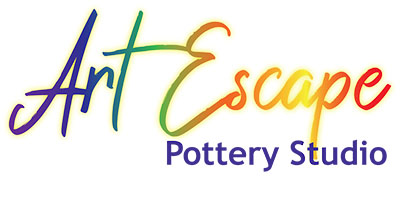The Therapeutic Potential of Clay Work and Art, with Steve Gordon as a Guide
In the realm of mental health and well-being, art therapy stands as a beacon of hope and healing, offering individuals a safe and expressive outlet for processing emotions, reducing stress, and fostering self-discovery. Among the myriad forms of art therapy, working with clay emerges as a particularly potent tool for transformation, providing individuals with a unique opportunity to engage in mindful creation and tactile exploration. Let’s explore the therapeutic benefits of working with clay and art, with a special focus on finding a skilled pottery teacher like Steve Gordon to guide the way.
Understanding Art Therapy: A Pathway to Healing
Art therapy harnesses the power of creative expression to promote mental and emotional well-being. By engaging in the artistic process, individuals can explore their thoughts, feelings, and experiences in a non-verbal and non-threatening manner. Through art, individuals can externalize their inner struggles, gain insight into their emotions, and develop coping mechanisms for managing stress and trauma.
The Therapeutic Essence of Clay Work
Working with clay offers a deeply therapeutic experience, inviting individuals to connect with the material on a tactile and sensory level. The pliability and responsiveness of clay allow individuals to express themselves freely, using their hands to shape and mold the material according to their innermost thoughts and feelings. The rhythmic motion of kneading, throwing, and sculpting clay can induce a state of relaxation and mindfulness, providing a respite from the stresses of daily life.
Finding Peace and Presence in the Process
As individuals immerse themselves in the process of working with clay, they are encouraged to let go of worries and distractions and embrace the present moment fully. The act of creating with clay becomes a form of meditation, as individuals focus their attention on the sensations of touch, the rhythm of their breath, and the transformative nature of the material. In this state of heightened awareness, individuals can experience a profound sense of peace and presence, reconnecting with themselves and the world around them.
Self-Expression and Personal Growth
Working with clay provides a powerful means of self-expression, allowing individuals to communicate their innermost thoughts and emotions in a tangible and concrete form. Whether it’s shaping a vessel, sculpting a figure, or experimenting with texture and color, individuals can find a sense of empowerment and agency in the creative process. Through clay work, individuals can explore their identities, confront their fears, and cultivate a greater sense of self-awareness and self-acceptance.
The Role of a Skilled Pottery Teacher: Steve Gordon as a Guide
A skilled pottery teacher, like Steve Gordon, plays a vital role in facilitating the therapeutic benefits of working with clay. With his expertise, patience, and encouragement, Steve creates a supportive and nurturing environment where individuals feel safe to explore their creativity and express themselves authentically. Steve’s guidance and mentorship empower individuals to overcome challenges, develop new skills, and unlock their full artistic potential. His compassionate presence and deep understanding of the therapeutic aspects of clay work make him an invaluable ally on the journey to healing and self-discovery.
Conclusion
Working with clay and art offers a pathway to healing, self-expression, and personal growth. Through the transformative power of creativity, individuals can find solace, strength, and renewal in the process of working with clay. With the guidance of a skilled pottery teacher like Steve Gordon, individuals can navigate their artistic journey with confidence and courage, knowing that they are supported every step of the way. As we continue to explore the therapeutic potential of clay work and art, let us celebrate its capacity to uplift the human spirit and nurture the soul.

